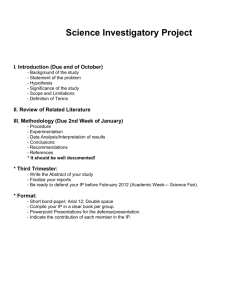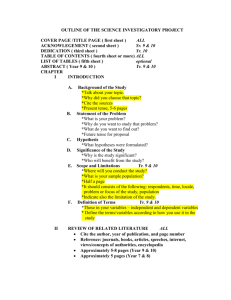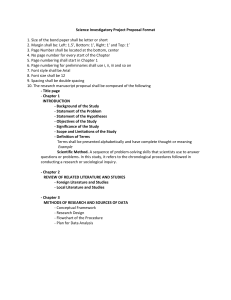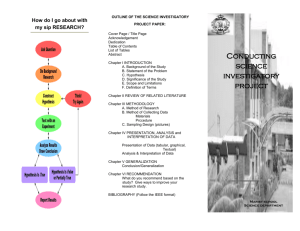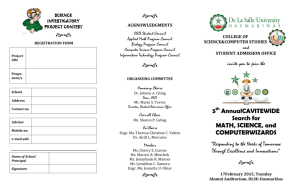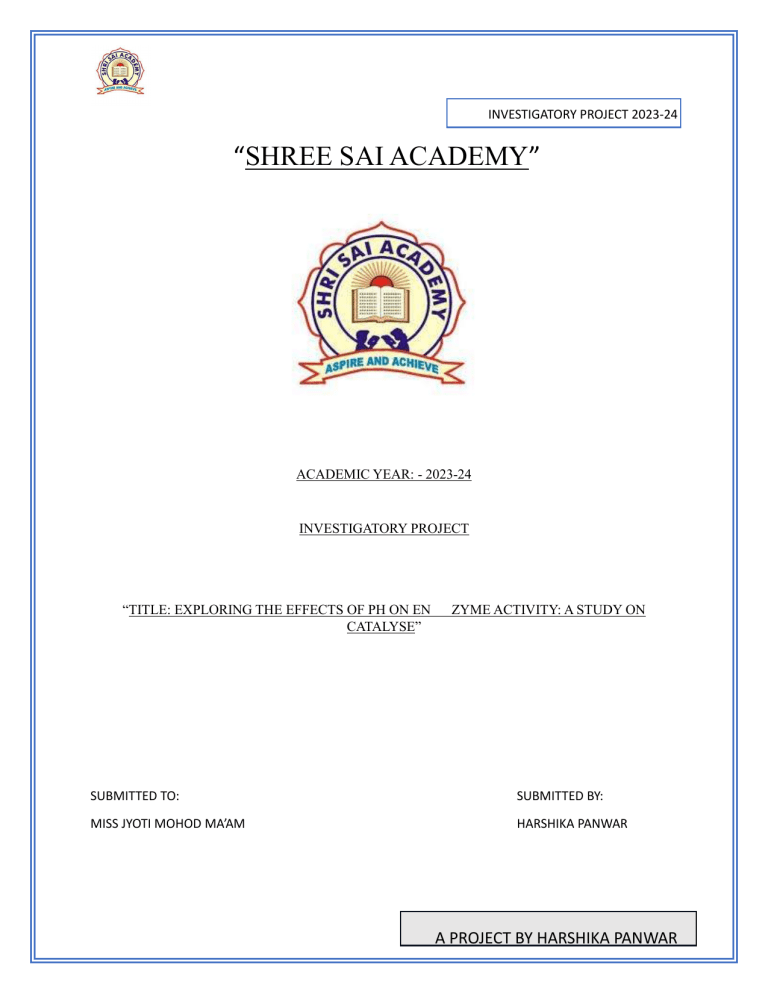
INVESTIGATORY PROJECT 2023-24 “SHREE SAI ACADEMY” ACADEMIC YEAR: - 2023-24 INVESTIGATORY PROJECT “TITLE: EXPLORING THE EFFECTS OF PH ON EN CATALYSE” ZYME ACTIVITY: A STUDY ON SUBMITTED TO: SUBMITTED BY: MISS JYOTI MOHOD MA’AM HARSHIKA PANWAR A PROJECT BY HARSHIKA PANWAR INVESTIGATORY PROJECT 2023-24 Acknowledgement: I would like to express my special thanks to my physics teacher “Mr. Siddhart Yadav sir” for his expert direction and encouragement in helping me finish my project. I would like to thank our Principal Sir, Mr. Vijay Tiwari, and Vice Principal Ma’am, Miss Anita Joshi, for providing me with all the amenities I want. DATE: STUDENT NAME: 23/10/2023 Harshika Panwar A PROJECT BY HARSHIKA PANWAR INVESTIGATORY PROJECT 2023-24 CERTIFICATE: This is to certify that Harshika Panwar of class XII B (SHIVI) has successfully completed her physics investigatory project on the Topic “To estimate the charge induced on each of the two identical styrofoam (or pith) balls suspended in a vertical plane by making use of Coulomb`s law” in the year 2023-24 under the guidance of Mr. Siddhart Yadav sir. Teacher’s Signature: Principal Seal & Sign: External Signature: A PROJECT BY HARSHIKA PANWAR INVESTIGATORY PROJECT 2023-24 INDEX: S.No 1. 2. 3. 4. 5. 6. 7. 8. 9. 10. 11. 12. 13. 14. 15. 16. 17. TOPIC Topic Introduction Objective Enzymes: The Catalysts of Life What is Catalase? The pH Scale Optimal pH for Enzyme Activity Acidic and Alkaline Environments The Importance of pH in Enzyme Activity The Experiment: Studying the Effects of pH on Catalase Activity. Materials Required Procedure. Results: pH and Catalase Activity Interpreting the Results Factors that Affect Enzyme Activity Applications of Enzyme Activity Limitations of the Study Future Directions Conclusion . A PROJECT BY HARSHIKA PANWAR INVESTIGATORY PROJECT 2023-24 Objective: To estimate the charge induced on each of the two identical styrofoam (or pith) balls suspended in a vertical plane by making use of Coulomb`s law. A PROJECT BY HARSHIKA PANWAR INVESTIGATORY PROJECT 2023-24 Materials Required: 1. Small size identical balls ( pitch or soft plastic ) 2. Physical balance or Electronic balance 3. Half meter scale 4. Cotton thread 5. Stand 6. Glass rod ( or plastic rod ) 7. Silk cloth ( or woolen cloth ) A PROJECT BY HARSHIKA PANWAR INVESTIGATORY PROJECT 2023-24 Procedure: 1. Weight the mass of each identical pith balls by balance and note down it. 2. Tie the balls with two silk or cotton threads and suspend at a point on a stand or a rigid support. Measure the length of threads by half meter scale. The length of threads should be equal. Note down the length. 3. Rub the glass rod with silk cloth and touch with both balls together so that the balls acquire the equal charge. A PROJECT BY HARSHIKA PANWAR INVESTIGATORY PROJECT 2023-24 4. Suspend the balls freely and the balls stay away a certain distance between the walls when they become stationary. Now note down the distance. 5. Touch any one suspended ball with other uncharged fourth ball and takes the fourth ball away and repeat the fourth step. 6. Touch other suspended ball with another uncharged fourth ball and takes the fourth ball away and repeat the fourth step. A PROJECT BY HARSHIKA PANWAR INVESTIGATORY PROJECT 2023-24 Bibliography: 1. Dixon, M. and Webb, E.C. (1958) Academic Press. 2. Study.com 3. Research gate. A PROJECT BY HARSHIKA PANWAR INVESTIGATORY PROJECT 2023-24 Thank you HOPE I WAS ABLE TO CONVEY MY WORK TO YOU. A PROJECT BY HARSHIKA PANWAR INVESTIGATORY PROJECT 2023-24 Theory: The fundamental concept in electrostatics is electrical charge. We are all familiar with the fact that rubbing two materials together:- for example, a rubber comb on cat fur – produces a “static” charge. This process is called charging by friction. Surprisingly the exact physics of the process of charging by friction is poorly understood. However, it is known that the making and breaking of contact between the two materials transfer the charge. The charged particles which makeup the universe come in three kinds : positive, negative, and neutral. Neutral particles do not interact with electrical forces. Charged particles exert electrical and magnetic forces on one another, but if the charges are stationary, the mutual force is very simple in form and is given by Coulomb`s law. F = k q1q2 R2 A PROJECT BY HARSHIKA PANWAR INVESTIGATORY PROJECT 2023-24 Where F is the electrical force between any two stationary charged particles with charges q1 and q2 (measured in Coulombs), r is the separation between the charges (measured in meters), and k is a constant of nature (equal to 9x10^9 Nm2/C2 in SI units). The study of the Coulomb forces among arrangements of stationary charged particles is called electrostatics. Coulomb`s Law describes three properties of the electrical force: 1. The force is inversely proportional to the square of the distance between the charges, and is directed along the straight line that connects their centers. 2. The force is proportional to the product of the magnitude of the charges. 3. Two particles of the same charge exert a repulsive force on each other, and two particles of opposite charge exert an attractive force on each other. A PROJECT BY HARSHIKA PANWAR INVESTIGATORY PROJECT 2023-24 A PROJECT BY HARSHIKA PANWAR
